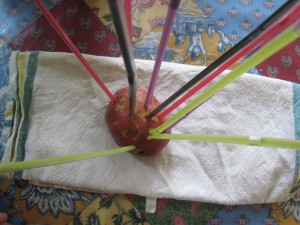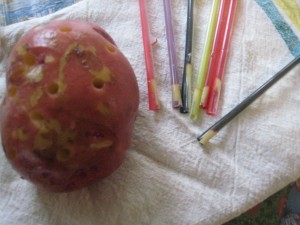Tag: science’
Chemistry for Kids book
- by KitchenPantryScientist
Here’s some fun footage of kids doing projects from Kitchen Science Lab for Kids. I miss those mask-less photo shoots! (Book Photos by Amber Procaccini and illustrations by @kellyannedalton.) If you’ve got a young scientist on your list, “CHEMISTRY FOR KIDS -Homemade Science Experiments and Activities Inspired by Awesome Chemists, Past and Present” is available everywhere books are sold!
Hot Chocolate Bombs (Holiday Science)
- by KitchenPantryScientist
Here’s a video on how to make hot chocolate bombs. My tips below.
- Buy thin silicone molds like these that make it easy to pop chocolate half-domes out.
- Melt chocolate (chips or a chopped chocolate bar) in the microwave at 15 second intervals until almost all of it is melted, but there is still some solid chocolate. Stir until the last of the solid chocolate melts. (If you get the chocolate too hot, it ruins the crystal structure of the fat in the cocoa butter and it won’t re-harden very well.)
- Use a spoon or brush to coat the sides of the mold. Put in the freezer (or outdoors if it’s below freezing) for five minutes.
- Add a second layer of chocolate to cover any holes and thicken the structure. Put outside for five more minutes and then carefully remove the chocolate.
- Put hot chocolate mix and marshmallows in half of a dome.
- Add melted chocolate to a small plastic bag, cut the corner off and pipe the chocolate around the edge of the filled half-dome.
- Put a second half-dome on top, smooth the seam with your finger and allow the chocolate to hard.
- Decorate by piping more chocolate on top and adding crushed candy or sprinkles.
- Add to hot milk, stir and enjoy!
Science Books for Kids (Holidays 2020)
- by KitchenPantryScientist
If you’re looking for holiday gift ideas for the young scientist on your list, here’s Science Magazine’s 2020 list of science books for kids and teens! They’re all finalists for the AAAS (American Association for the Advancement of Science)/Subaru Science prize and I’m thrilled to have my latest book, Chemistry for Kids, included on the list.
Find the entire list here, along with descriptions and brief reviews of each book: https://blogs.sciencemag.org/books/2020/12/01/books-for-young-readers-2020/

From the Science Magazine review of Chemistry for Kids:
“If you were to choose 25 discoveries to document the progress of chemistry through millennia, what would you pick? In Chemistry for Kids, Liz Lee Heinecke takes us on such a journey, using familiar objects and simple scientific instruments to create straightforward chemistry experiments that chart the field’s evolution over time.
Each chapter is centered on a different experiment and begins with a vivid illustration that highlights a scientist and his or her work. A few paragraphs of engagingly written introduction are followed by colorful photographs of youngsters demonstrating the steps of the experiment. A brief explanation of the chemistry that underlies each experiment wraps up each chapter”
“If you were to choose 25 discoveries to document the progress of chemistry through millennia, what would you pick? In Chemistry for Kids, Liz Lee Heinecke takes us on such a journey, using familiar objects and simple scientific instruments to create straightforward chemistry experiments that chart the field’s evolution over time.
Each chapter is centered on a different experiment and begins with a vivid illustration that highlights a scientist and his or her work. A few paragraphs of engagingly written introduction are followed by colorful photographs of youngsters demonstrating the steps of the experiment. A brief explanation of the chemistry that underlies each experiment wraps up each chapter”

Thanksgiving Food Science: Cranberry Spy Juice
- by KitchenPantryScientist
(Adapted from Kitchen Science Lab for Kids)
Grab an extra bag of cranberries this Thankgiving! Kids can use it to reveal invisible messages they write with baking soda and water.
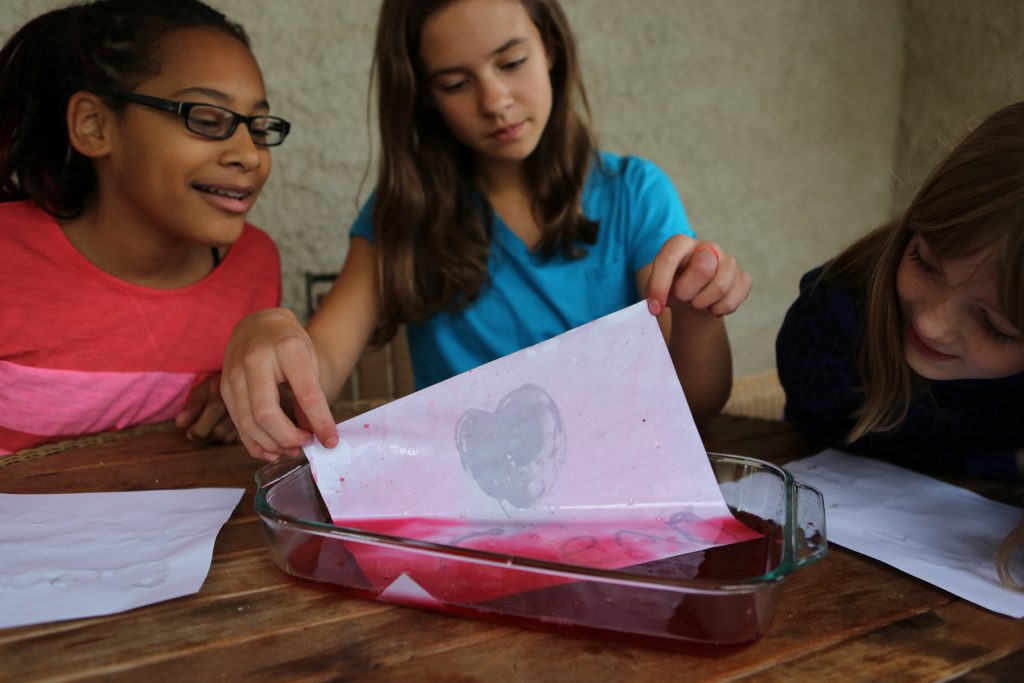
You’ll need:
-around 2 cups of cranberries
-water
-baking soda
-printer paper
-small paintbrush, Q-tip, or lollipop stick
Safety tips and Hints:
Boiling the berries should be done by an adult. Keep the lid on the pan, since the air pockets that make cranberries float can also make them explode. Kids can take over once the juice is cool.
When playing with cranberry juice, aprons or old clothes are a good idea, since it stains!
Directions:
Step 1. Cut a cranberry in half and observe the air pockets that make it float.
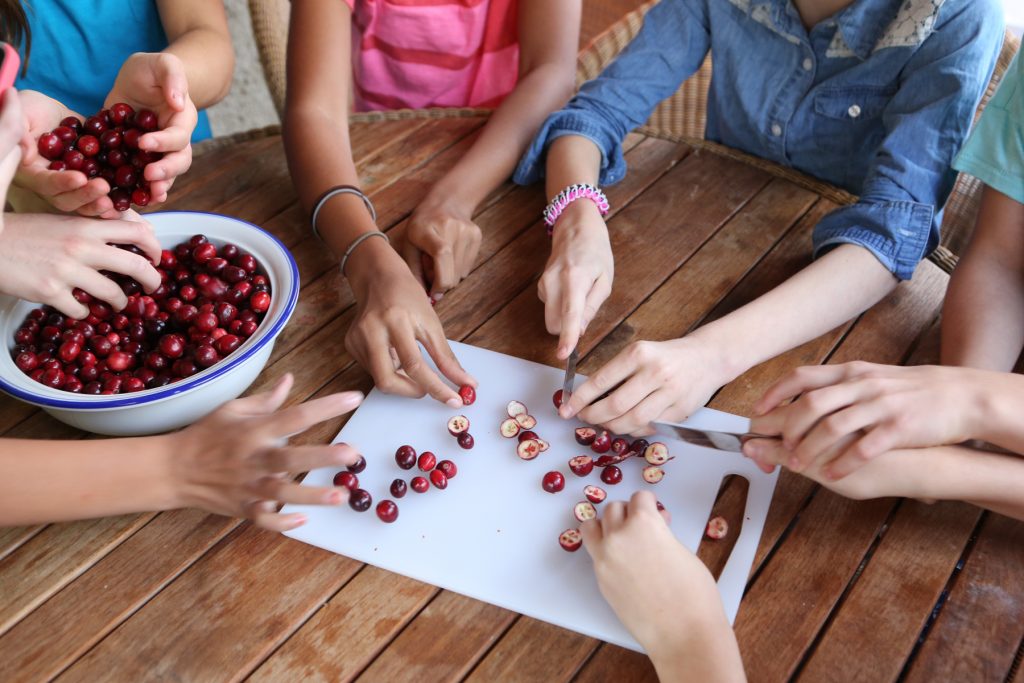
Step 2. Boil the cranberries in about three cups of water for 15 to 20 minutes, covered. Listen for popping sounds as the air in the cranberries heats up and they explode.
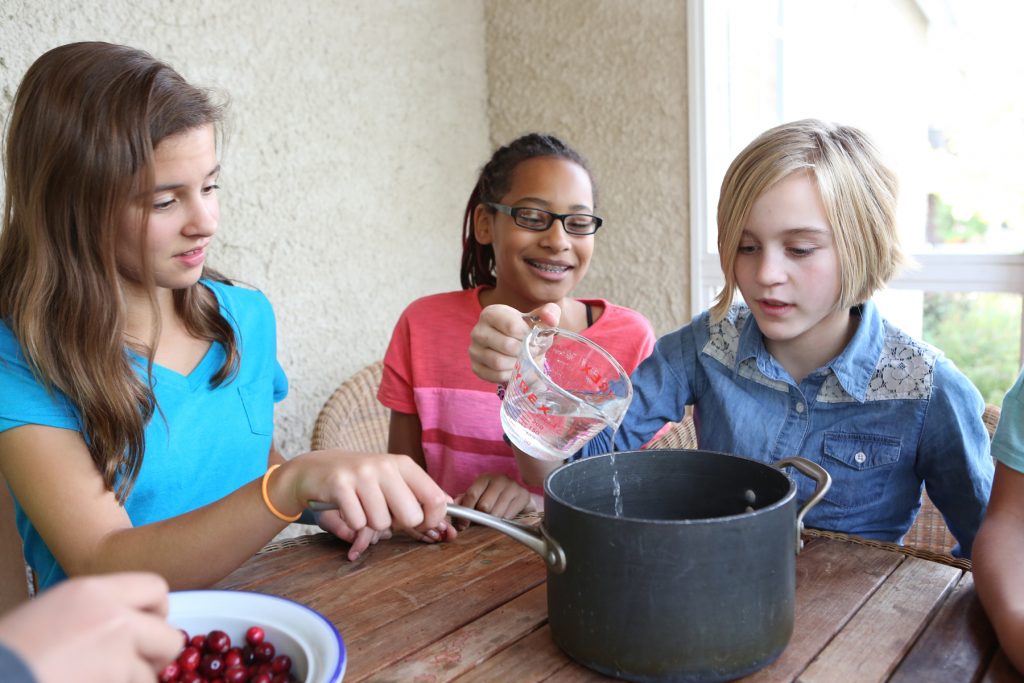
Step 3. Crush the cooked berries and push the liquid through a sieve or colander to collect the concentrated cranberry juice.
Step 4. Allow the juice to cool and pour it into a casserole dish or cake pan big enough to hold a piece of paper. If your cranberry juice seems thick and syrupy, add a little water, so that it’s thin enough to soak into paper!
Step 5. Test the paper you want to use by cutting a small piece and soaking it in the cranberry juice. If it stays pink, it will work, but if it turns blue or gray, try some other paper.
Step 6. Add a few teaspoons of baking soda to 1/3 cup of warm water and stir well. Don’t worry if you can still see some baking soda.
Step 7. Using a Q-tip, paintbrush, or a homemade writing tool, use the baking soda solution as ink to write a message on your paper. It may take a little practice, so don’t get frustrated.

Step 8. Let your message air dry, or speed things up with a blow dryer.
Step 9. To reveal your message, place your paper in the cranberry juice and see what happens!
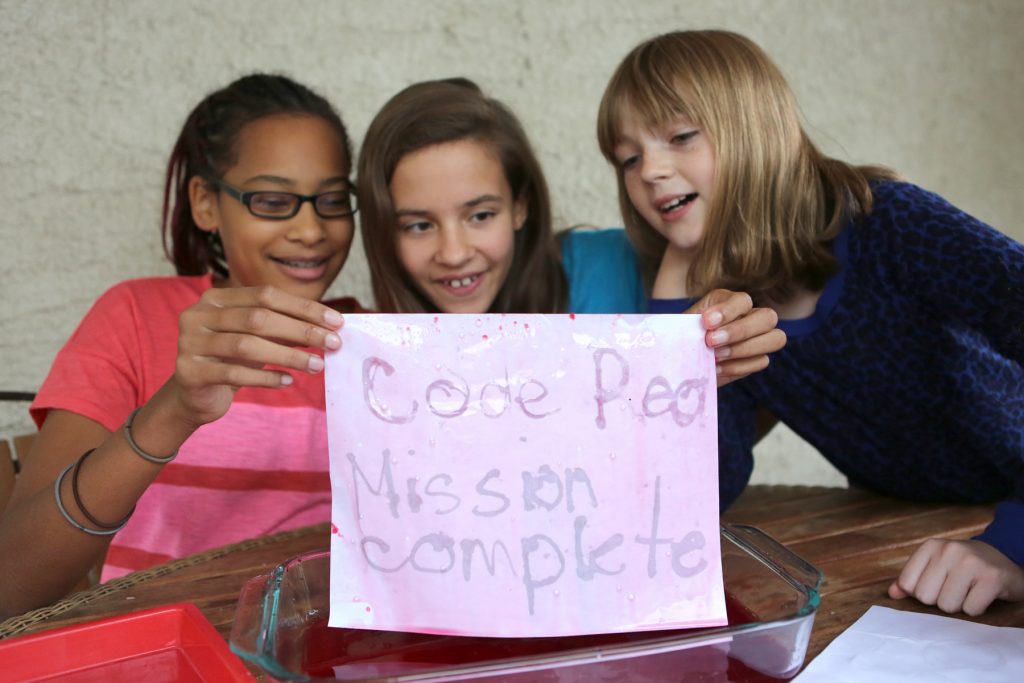
*What other natural acid/base indicators could you use to do this experiment? What else could you use as ink.
The Science Behind the Fun:
Cranberries contain pigments called anthocyanins (an-tho-SY-a-nins,) which give them their bright color. In nature, these pigments attract birds and other animals to fruit. This is important because animals eat the berries and spread plants seeds from one place to another.
These pigments, called flavanoids, change color when they come in contact with acids and bases. Cranberry juice is very acidic, and the pigment is pink in acids, but when you add it to a base, it turns purple or blue.
Baking soda is a base, so your baking soda message will turn blue when it comes into contact with the pigments in the cranberry juice. Eventually, when enough cranberry juice soaks into the paper, it will dilute the baking soda, turning the pigment back to red and your message will disappear!
There are over 300 kinds of anthocyanins which are found in many fruits and vegetables including blueberries, red cabbage, grapes and blueberries. Scientists believe they may have many health benefits.
Science with Thanksgiving Food: Potato Porcupine
- by KitchenPantryScientist
As a kid, I was always fascinated by stories of pieces of straw from a field being driven into wooden planks in barns and houses by the swirling winds.
With a potato, plastic drinking straws and a glass of water, you can see for yourself how this happens. Like drinking straws, real straw is hollow and although a potato is much softer than a piece of wood, you’ll get the picture.
You’ll need a potato and some sturdy plastic drinking straws.
Begin by soaking a potato in a glass of water for about 30 minutes to soften the skin. We used a red, boiling potato, because that’s what I had on hand.
Then, grasp a straw tightly, near the middle and stab it into the potato as hard as you can. Try starting at different distances from the potato to see whether it makes a difference in how far the straw goes in. (You can mark it with a Sharpie and pull it out.)
We were surprised to find that, instead of breaking or bending, the straw can be driven surprisingly deep into a potato . This happens because objects in motion, like the straw, tend to stay in motion and objects at rest, like the potato, tend to stay at rest. (Newton’s First Law of Motion) This is called inertia. In addition, the paper-thin edges of a drinking straw don’t offer much resistance, and potatoes are composed of around 90% water.
Halloween Candy Lava Lamps (Use chemistry to test whether candy contains citric acid.)
- by KitchenPantryScientist
Make mini “lava lamps” from water, baking soda and oil to test whether candy contains citric acid!
The science behind the fun: Oil floats on water because it is less dense. When citric acid in candy combines with baking soda, a chemical reaction occurs which produces carbon dioxide gas bubbles. As the bubbles move up through the oil, they carry water and food coloring with them. Once the gas escapes into the air, gravity pulls the water and food coloring back down through the oil.to the bottom of the container.
Coffee Filter Volcano
- by KitchenPantryScientist
(Re-posting one of our favorite experiments!)
Last spring, I went into my daughter’s first grade classroom to do the famous volcano experiment that involves mixing baking soda (sodium bicarbonate) and vinegar (acetic acid). Unfortunately, with our hectic schedule there was no time to create a “work of art” volcano from paper mache or clay. So, we made one out of a paper bag. It was a smashing success. Note: It works just as well to use a coffee filter instead of a paper bag.
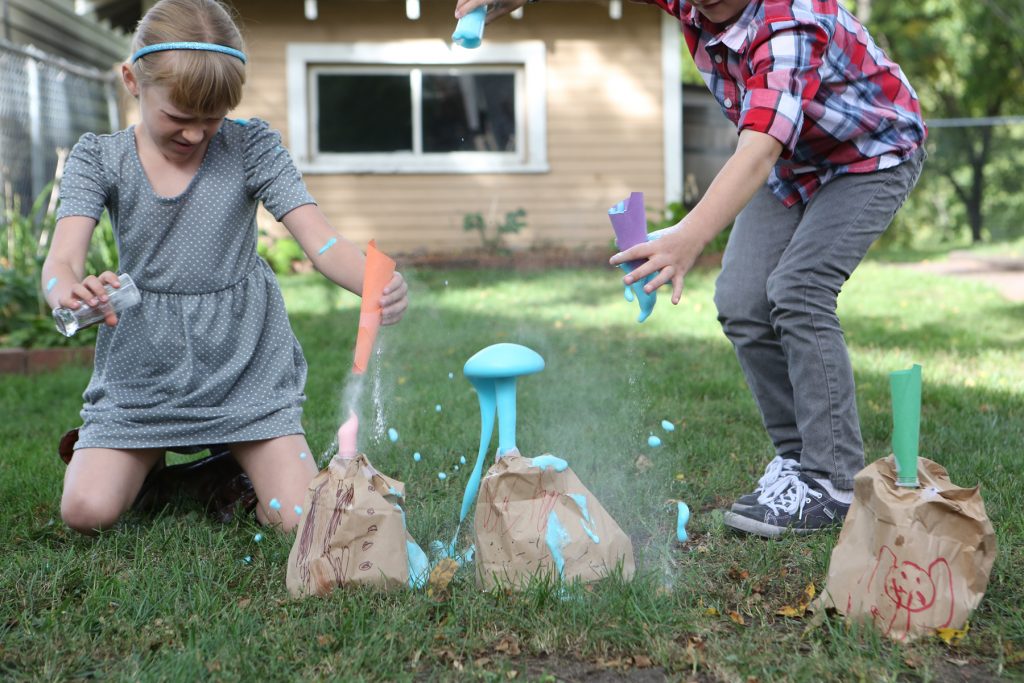
To make your own paper bag volcano, you’ll need a brown paper lunch sack (or a slightly bigger one like we used), an empty plastic water or soda bottle, a cup of vinegar, red food coloring and about a fourth of a cup of baking soda. *Cone coffee filters make great volcano cones too and work well on small plastic bottles!
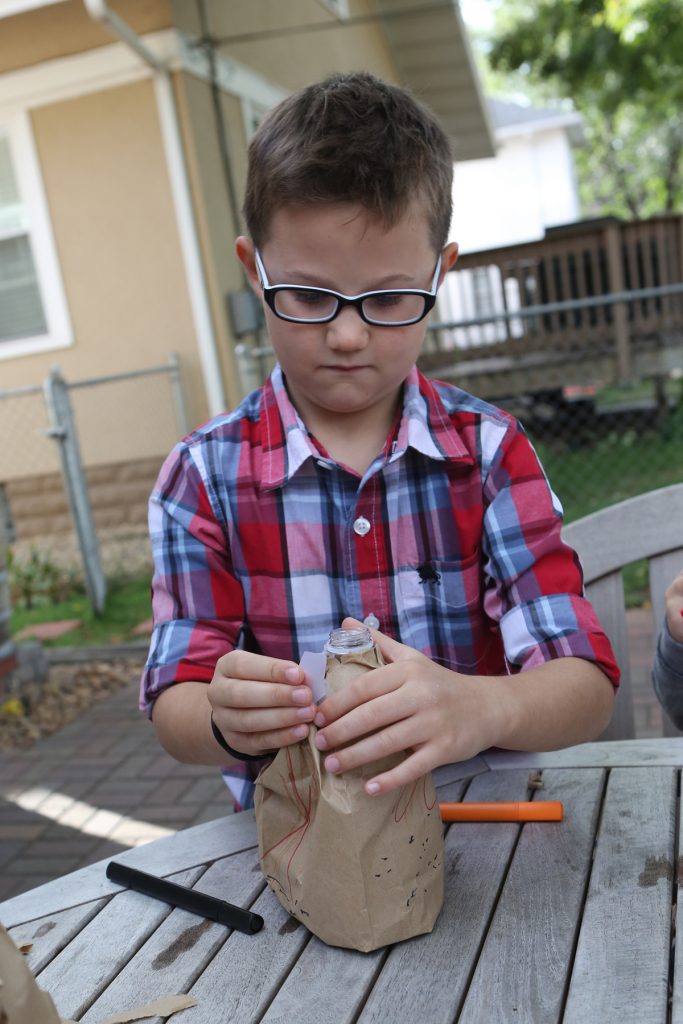
Remove the lid from the bottle, invert the brown bag over it, and tear open the bottom of the bag, along the flaps. Then, loosely tape the paper sack so that it fits around the mouth of the bottle. Don’t tape it to the bottle. If you like to draw, you can decorate the bag with markers.. We squashed and tore the bottom of the bag a little, to make it look more mountain-like.
Now, remove the bottle, fill it with the vinegar and add several drops of red food coloring for your “lava.” Place the bag bag over the bottle to hide the lava container.
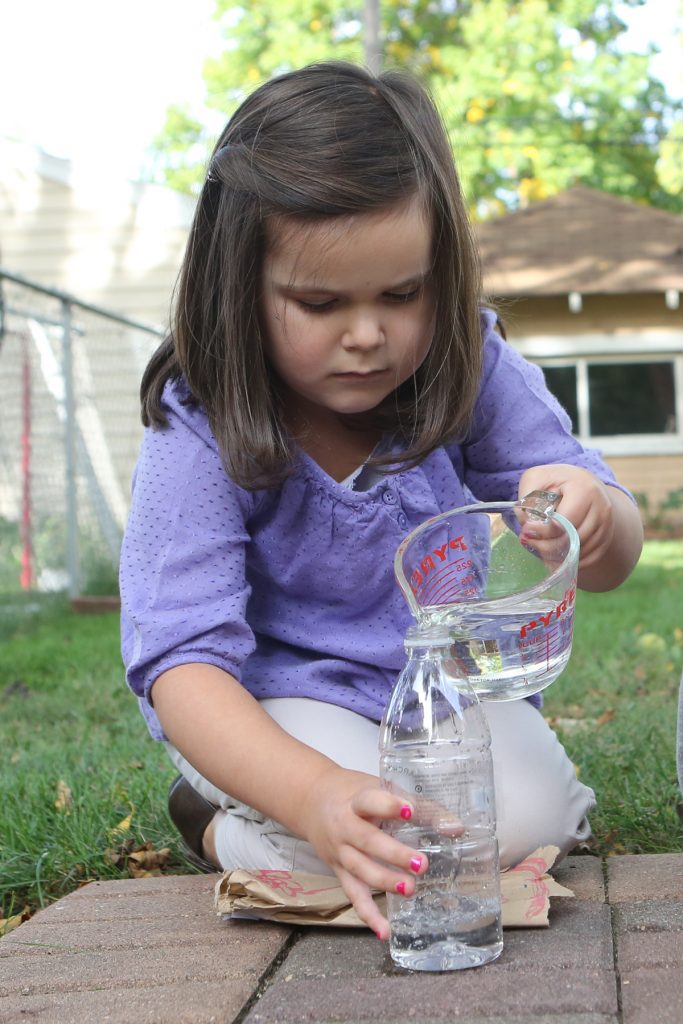
Place the volcano on a tray or something that will contain overflow and you’re ready for eruption!
Using a folded piece of paper or a small paper cup with the lip pinched into a spout, quickly dump all of the baking soda into your bottle to start the chemical reaction. You’ll see the volcano erupt as the baking soda combines with the vinegar to produce carbon dioxide gas, which is one of the gases spewed by real volcanoes.
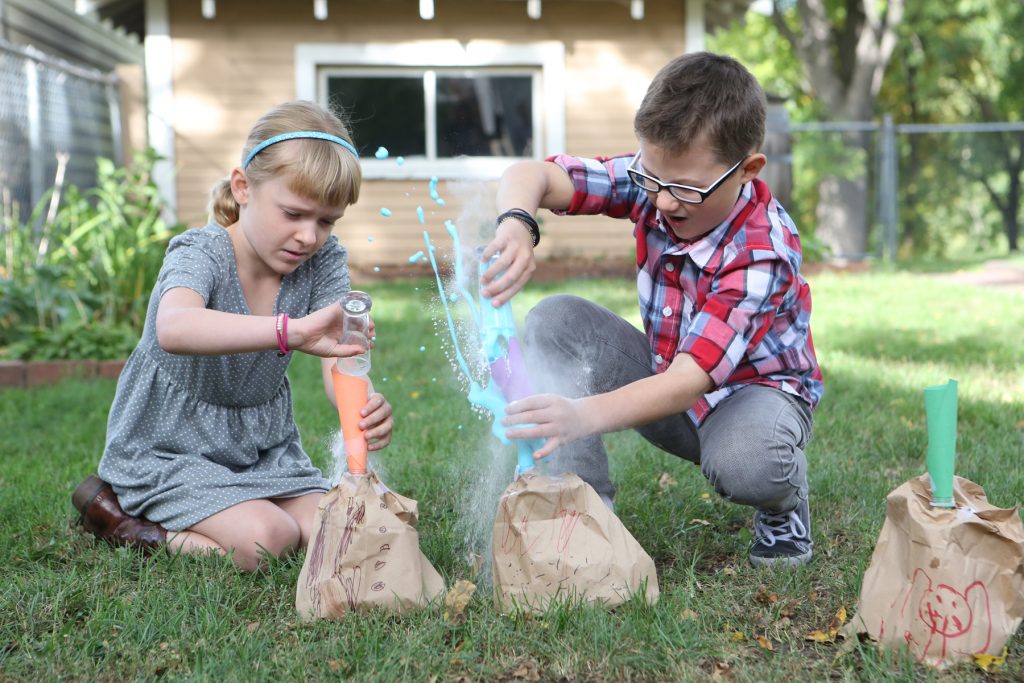
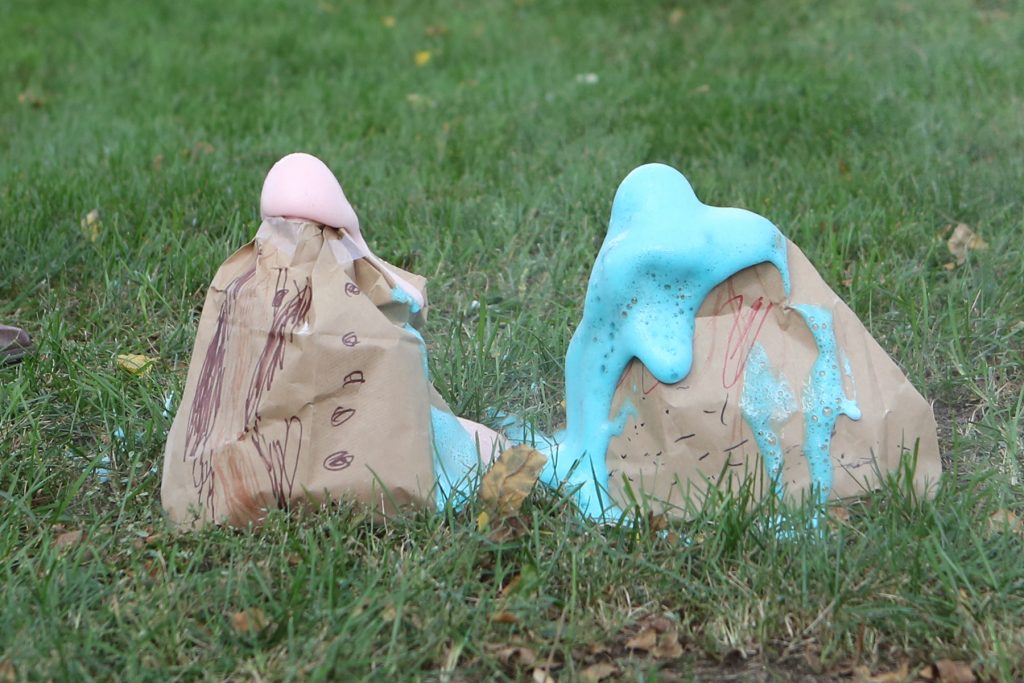
If you liked this experiment, try making “fizzy balloons“ with the same ingredients (plus a balloon, of course!) If you want to learn more about carbon dioxide gas and the carbon cycle, here’s a link to a cool video from NASA that explains it using a banana and a chunk of coal.
Cornstarch Frescoes
- by KitchenPantryScientist
Made corn starch frescoes from my book “Outdoor Science Lab for Kids” on @fox9morning today! Mix 2 parts cornstarch with 1 part water, pour out on baking sheet or sidewalk and paint with watercolors or food coloring! (Wear old clothes if painting with food coloring) Let frescoes dry, or wash away with a garden hose.
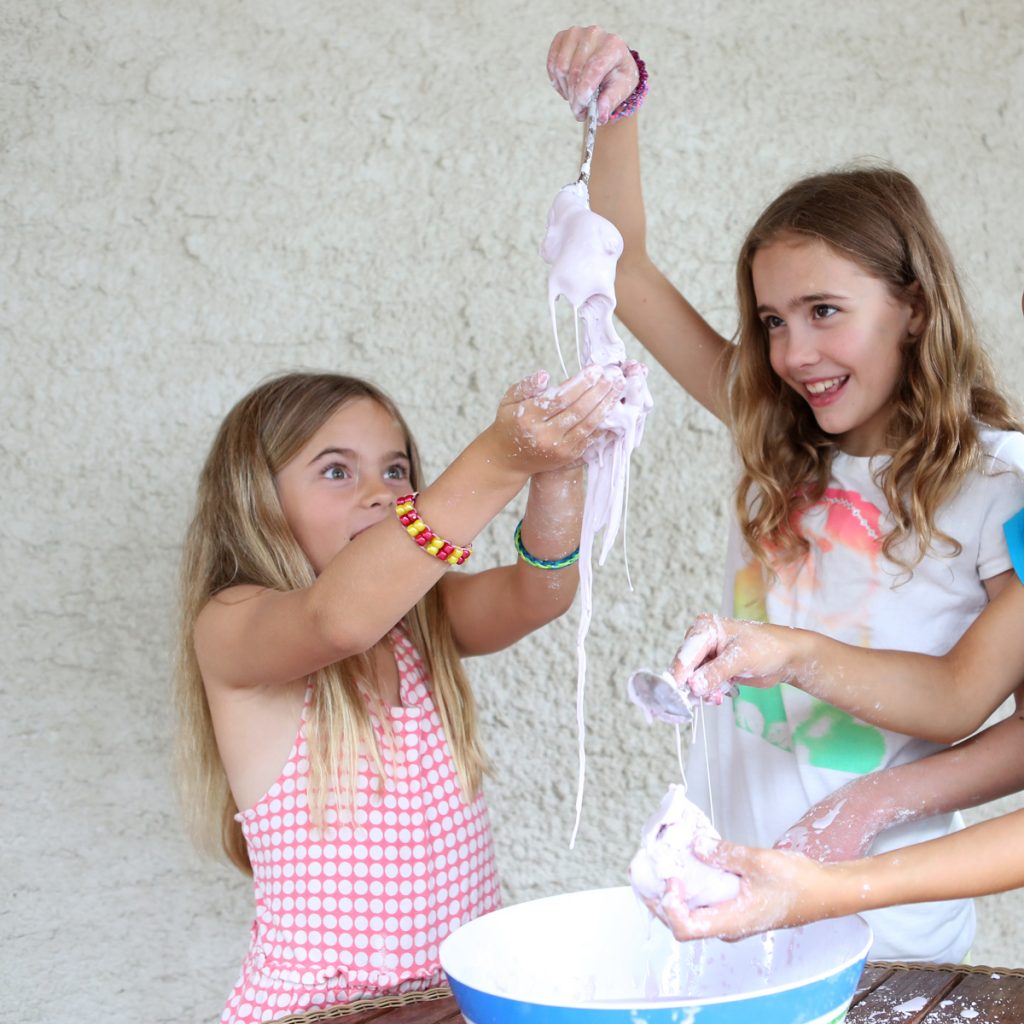
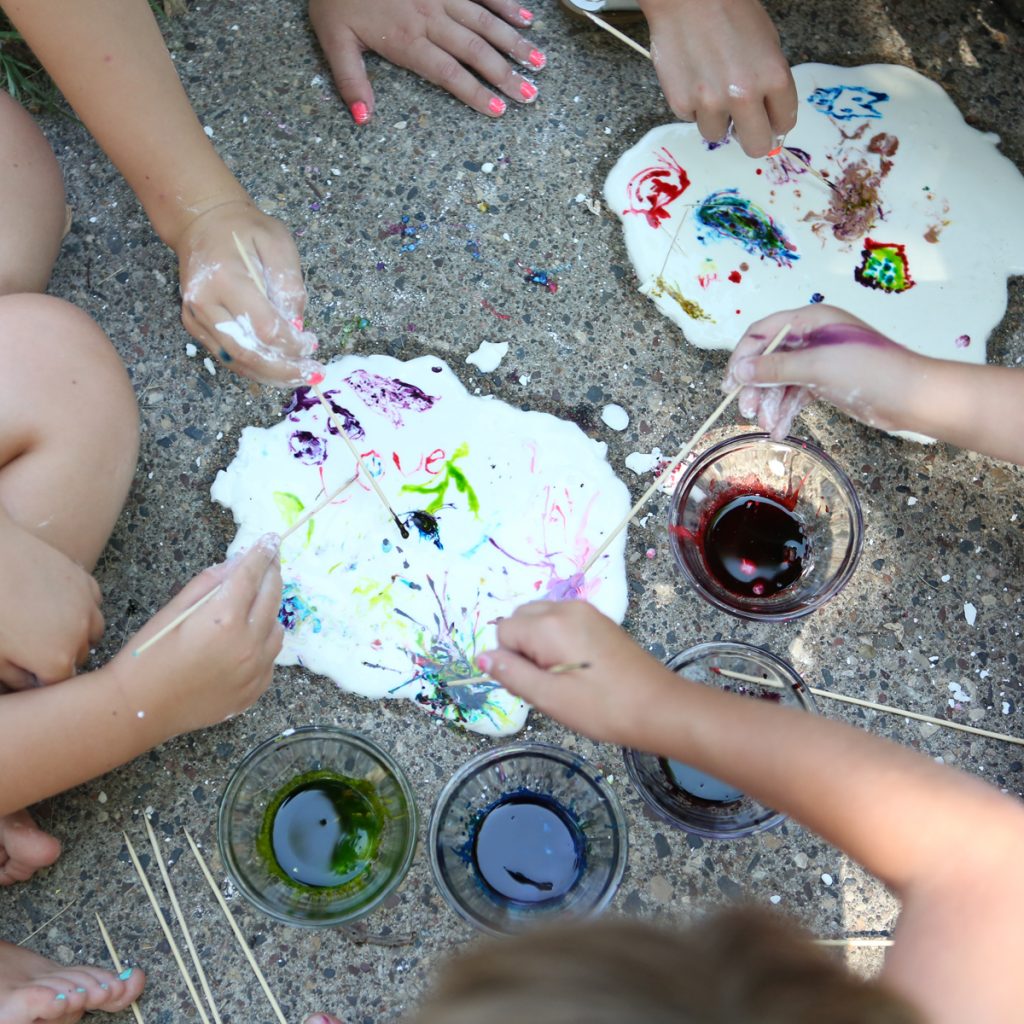
Summer Fun with Dry Ice
- by KitchenPantryScientist
Here are some fun projects you can do using dry ice! Dry is is frozen carbon dioxide, and you can use it to carbonate drinks, make fizzy fruit, or even blow giant bubbles!
Star Wars Science: Pop a Balloon Using the Sun’s Power
- by KitchenPantryScientist
Here’s a fun video from Kaleigh demonstrating a project from my book “Star Wars Maker Lab!” Grab a magnifying glass and a balloon, head outdoors and try it! (Click here for a link to order the book.)
Thank you, Tom Gross (from coffeewithkenobi.com) and Kaleigh!
